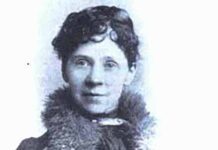Rupprecht von Wittlesbach was born to rule and lead in battle – but after November 1918, he could do neither. His dynasty had ruled Bavaria for nearly eight centuries; but not now. Rupprecht had spent four years of world war as a hero for his victories to subjects of the German Empire. No longer a German Empire.
He was still head of a sprawling dynastic clan. He was venerated by a significant percentage of Bavarians. Concurrently, Rupprecht was viewed as dangerous and disloyal by socialist, then Nazi rulers.
Crown Prince Without a Crown
To retain some of the familys personal assets, Rupprecht and the Bavarian Landestag established a private foundation in 1923. The foundation still operates today as “… the Wittelsbacher Ausgleichsfonds Generaldirektion [Wittlesbach Equalization Fund] …”
Yet another palace in which the family was able to continue living was Schloss Nymphenburg.
Family Business vs. The Family Business
Remarriage was also very much on the Crown Princes mind. Late in the Great War, he and Princess Antonia of Luxembourg (30 years his junior) became engaged.
They married in 1921. “… the ceremony was performed by the Nuncio to Bavaria, Eugenio Pacelli, later Pope Pius XII.” The new couple had six children. Rupprechts oldest son, Prince Albrecht (1905-to-1996) by his first wife, had ascended as Hereditary Prince of Bavaria.
Rise of the Nazis and the Second World War
The Nazi dictatorship grasped Germany in 1932. Crown Prince Rupprecht despised Hitler and was not shy in saying so. Rupprecht ”… confessed to King George V at a lunch in London in the summer of 1934 that he considered Hitler to be insane.” In late 1939, Rupprecht sought asylum in Italy with his family.
The royal couple knew the King and Pope, so the family was warmly welcomed. The Wittlesbachs first stayed with King Victor Emanuel. When the Reichsregierung barred their return, Rupprecht and the King arranged alternative housing outside Florence.
The Familys Luck Runs Out
In1943 German shock troops restored Mussolini to power, and a German army occupied Italy to resist Allied landings. Hitlers S.S. and Gestapo also swept up German citizens who had opposed the Nazi regime. To boost their odds, the Wittlesbachs separated. Antonia and their daughters fled to the mountains near Switzerland, while Rupprecht and Prince Heinrich remained in Florence.
Immediately after the von Stauffenberg plot to assassinate Hitler, thousands were arrested, and/or butchered. Hitler used the botched attempt to arrest or kill thousands more royals, nobles, and Wehrmact officers, either for genuine complicity, or to eliminate those he hated and feared.
On July 27 the Gestapo took … Antonia and her three youngest daughters into custody …. They were interrogated about the whereabouts of … [Rupprecht], but fortunately they did not know anything. Editha was also arrested in Florence and brought to her mother and sisters …. In spite of the fact that Antonia had fallen ill with typhus fever, she and her daughters were transported by train to Innsbruck. Antonia was left in a hospital there while her daughters … continued to Weimar. From there they were transported north, arriving on October 13 at the Oranienburg-Sachsenhausen Concentration Camp near Berlin.
Antonia never regained full health. Although rescued and cared for by the American Army and by her sisters (Grand Duchess of Luxembourg) government, she died in at 55 (1954). She refused to return to Germany, dividing her last years between Luxembourg, Switzerland and Rome.
Reunion and Redemption
Rupprecht continued evading the Nazis. The Allies took Florence in June 1944, ensuring that he and Prince Heinrich were safe. Major General Edgar Erskine Hume, military governor of Tuscany, and the Crown Prince had known each other well in Munich after the Great War.
Rupprecht and his son stayed in Florence for the next 10 months. Now aged 75, he quickly fell seriously ill from stress and infections. In Florence he could rely on American medical treatment. By late spring of 1945, Oranienburg was liberated by Pattons Third Army. Antonia and her daughters were given critical care by the Americans, then flown to Luxembourg to recover.
Rupprecht and Prince Heinrich returned to Bavaria in September. Crown Princess Antonia lived in three nearby countries, which ensured that she and Rupprecht had lengthy intervals together. The Crown Prince felt bound to re-establish his presence in Bavaria. He moved to Schloss Leutstetten, using Nymphenburg for family/dynastic events.
Hereditary Prince Albrecht and his family, were also liberated from Sachsenhausen, having been arrested in Hungary. They now moved to Schloss Berg, on the grounds of which “Mad” King Ludwig had committed suicide almost 60 years earlier. Rupprechts children all married by the early 1950s. Prince Heinrich met a young French baroness in Manhattan. Both died in horrible automobile accidents; Heinrich in 1959.
Up to 70 percent of Bavarians still preferred a restoration of the monarchy. Nonetheless, Rupprecht “… found no support from the US occupation authorities, who, however, treated him courteously. General Dwight D. Eisenhower … [had] provided a special plane to fly him back to Munich ….”
Still King of Bavaria
At age 76 in 1945, the Crown Prince was more about restoring the monarchy for sake of the dynasty and for Bavaria, more than for himself. Unfortunately, a Kingdom of Bavaria was not on anyones agenda except for his, other Wittlesbachs, and Bavarian loyalists. .
If there were any doubts that Rupprecht was still viewed as Crown Prince or King of Bavaria, they were scattered in the ceremonies after his death. When he died in 1955, Rupprecht Maria Luitpold Ferdinand von Wittlesbach lay in state at the Munich Residenz. The Bavarian crown and scepter graced his casket, and he lies in the vault of the Royal Family at the Theatinerkirche that is attached to the Residenz.








